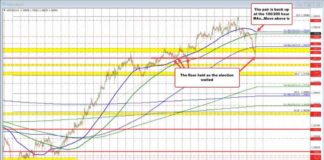Eurozone Trade Data: Goods Exports and Imports Experience Decline in June
The latest Eurozone trade data for the month of June has shown a significant decline in both goods exports and imports. According to the report, goods exports fell by 6.3% year-on-year to €236.7 billion, while goods imports experienced an even steeper decline of 8.6% year-on-year, amounting to €214.3 billion. This has raised concerns about the overall health of the Eurozone economy and its ability to bounce back from the impact of the ongoing global pandemic.
The trade balance for the Eurozone in June showed a surplus of €22.3 billion, despite the decline in both exports and imports. This surplus may provide some relief for policymakers and economists, as it indicates that the region’s trade position remains relatively stable. However, the sharp drop in both exports and imports raises questions about the underlying factors driving this trend.
Analysis of Eurozone Trade Data
Intra-Eurozone trade also experienced a decline in June, falling by 8.5% year-on-year to €214.5 billion. This highlights the interconnectedness of Eurozone economies and the impact of the overall economic slowdown on regional trade flows. The decline in intra-Eurozone trade is particularly concerning, as it reflects a lack of demand within the region itself.
On a seasonally adjusted basis, goods exports fell by 0.2% month-on-month to €236.2 billion, while goods imports saw a larger decline of 2.4% month-on-month to €218.7 billion. Despite these declines, the trade surplus widened from €12.4 billion in the previous month to €17.5 billion in June. This was larger than the expected surplus of €14.5 billion, indicating that the Eurozone’s trade position remains relatively strong.
Intra-Eurozone trade, on the other hand, saw a modest increase of 0.4% month-on-month to €210.7 billion. This suggests that while trade within the Eurozone is still struggling, there are signs of a slight recovery in demand within the region. However, the overall decline in both exports and imports raises concerns about the Eurozone’s ability to navigate the challenging economic conditions.
Challenges and Opportunities for the Eurozone Economy
The decline in goods exports and imports in June reflects the broader challenges facing the Eurozone economy. The ongoing global pandemic has had a significant impact on trade flows, as countries around the world have implemented restrictions and lockdown measures to contain the spread of the virus. This has disrupted supply chains, reduced consumer demand, and led to a slowdown in economic activity.
However, there are also opportunities for the Eurozone to recover from the current downturn. As countries gradually reopen their economies and lift restrictions, there is potential for a rebound in trade activity. The Eurozone’s strong trade surplus indicates that there is still demand for European goods and services, both within the region and from external markets.
Policymakers in the Eurozone will need to carefully monitor the evolving trade situation and take appropriate measures to support economic recovery. This may include targeted stimulus measures, efforts to boost domestic demand, and initiatives to promote trade and investment. By addressing the underlying factors driving the decline in exports and imports, the Eurozone can position itself for a more sustainable and resilient recovery.
In conclusion, the latest Eurozone trade data for June highlights the challenges and opportunities facing the region’s economy. While the decline in goods exports and imports is concerning, the trade surplus and signs of a slight recovery in intra-Eurozone trade provide some hope for the future. By addressing the underlying factors driving the decline in trade, the Eurozone can navigate the current economic challenges and position itself for a stronger recovery in the months ahead.

















